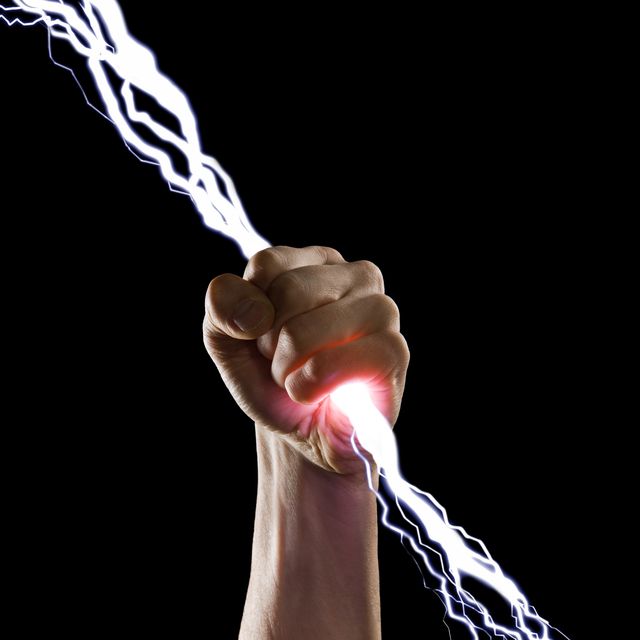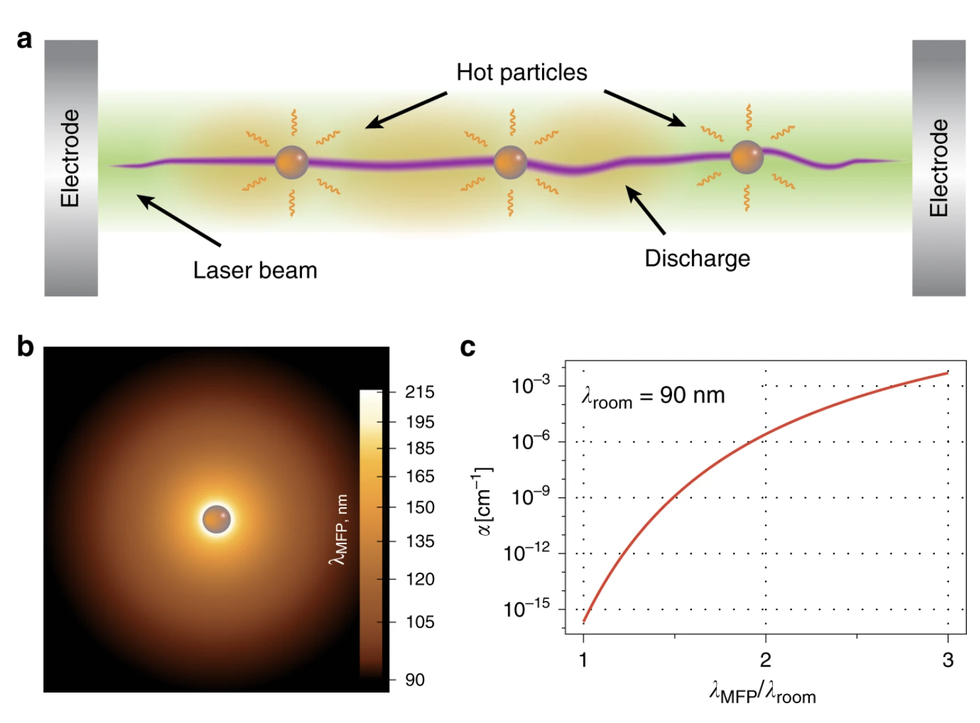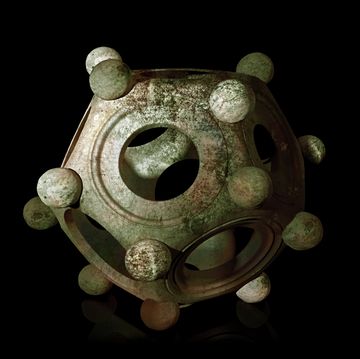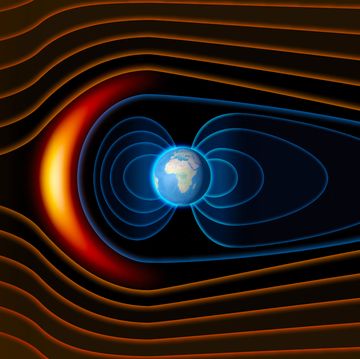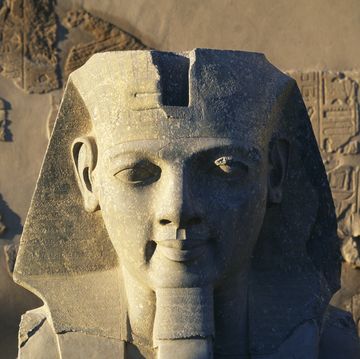- Low-powered sky lasers could help redirect and reduce the intensity of lightning strikes.
- Previous research involved higher-powered lasers, but this is a gentler, different mechanic.
- The technology could work with different materials, environmental conditions, and even shapes.
Could we trap lightning using a sky interference device? Scientists think so, and their design for a “tractor beam” could reduce one of the biggest causes of bushfires. Plus, the laser that powers it is far less powerful than in previous designs, meaning it’s a lot less villainous and a lot more possible.
⚡️You love badass tech. So do we. Let's nerd out over it together.
Here's how it works: Scientists study lightning patterns and agree on some preconceived paths that will cause the least harm and redirect lightning strikes from the driest or otherwise most vulnerable places. Then, they prime the air using a low-powered laser that pipes a ton of graphene particles along the length of its beam.
The beam of light-absorbing particles is a lightning magnet, and it also reduces the intensity of the discharge. This, the researchers say, amounts to an “efficient approach for triggering, trapping and guiding electrical discharges in air.”
This research builds on existing knowledge about how lasers can be used to influence lightning. That’s because the high-powered beams create a kind of plasma conduit in the air—like seeding clouds for rain, the line of plasma draws lightning to it and even catalyzes the discharges so they can be controlled. But there was always a catch.
The researchers explain:
“Such direct optical field-induced photoionization requires very high optical field intensities. Use of such high peak-power laser beams may limit the scope of applications. [N]o techniques that can control electrical discharges with low power laser beams exist.”
Imagine two lasers side by side, and they basically look the same. But while one is so hot it’s adding energized ions to the actual atoms and molecules the air is made of—totally fine in the right circumstances, but requiring very high power—the other is like an invisible skewer that naturally aligns certain particles within the beam.
The subsequent graphene kabob achieves the same goals, the researchers say. “Our approach does not rely on photoionization,” they say. “Instead, we locally control the mean free path of electrons in the ambient air and tailor conditions of electric breakdown.”
It doesn’t only work with graphene, either—the researchers encourage future studies on other materials, both metallic and not. In fact, it doesn’t need just a straight line, either. “Here, we have used a single vortex transporter beam and shown guidance along a straight line,” they explain.
“However, our approach is applicable to more complex scenarios. Notably, we envisage guidance of electrical discharges along complex three-dimensional paths in the ambient air with the use of multiple and/or spatially modulated beams including beams propagating along curved trajectory. In addition, the technique we propose pertains to atmospheres with a different gas composition and/or pressure level.”
Watch This:

Caroline Delbert is a writer, avid reader, and contributing editor at Pop Mech. She's also an enthusiast of just about everything. Her favorite topics include nuclear energy, cosmology, math of everyday things, and the philosophy of it all.
